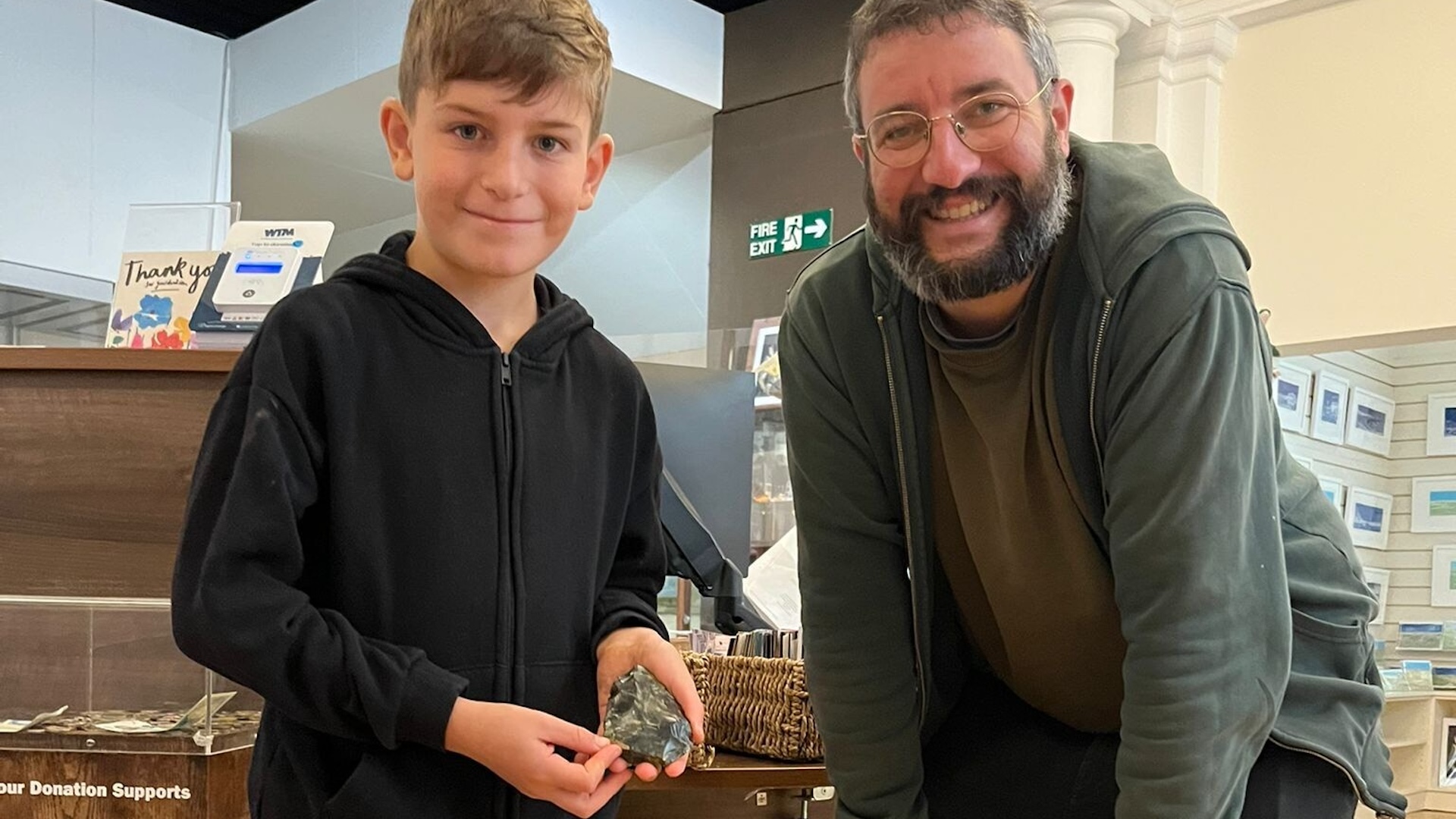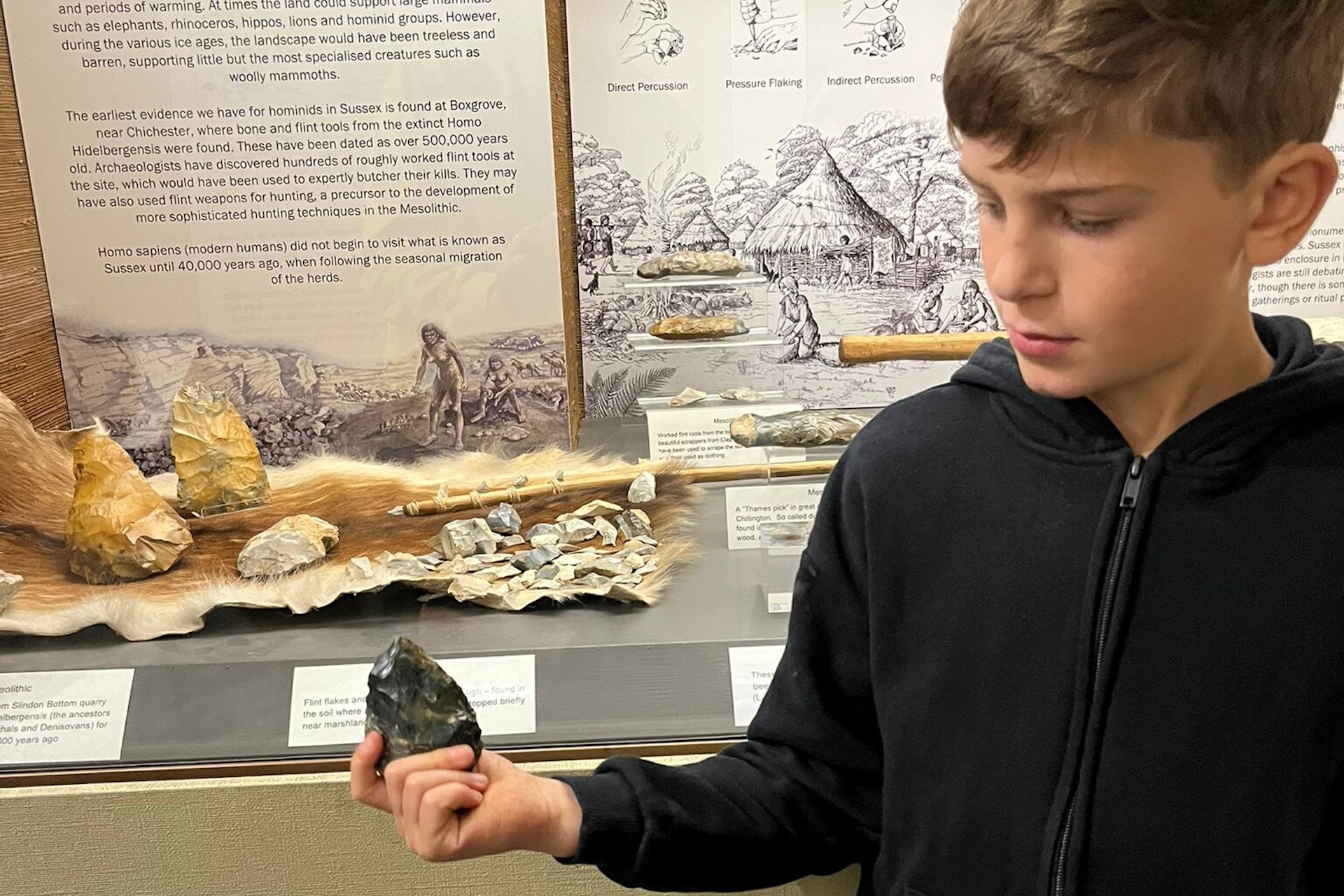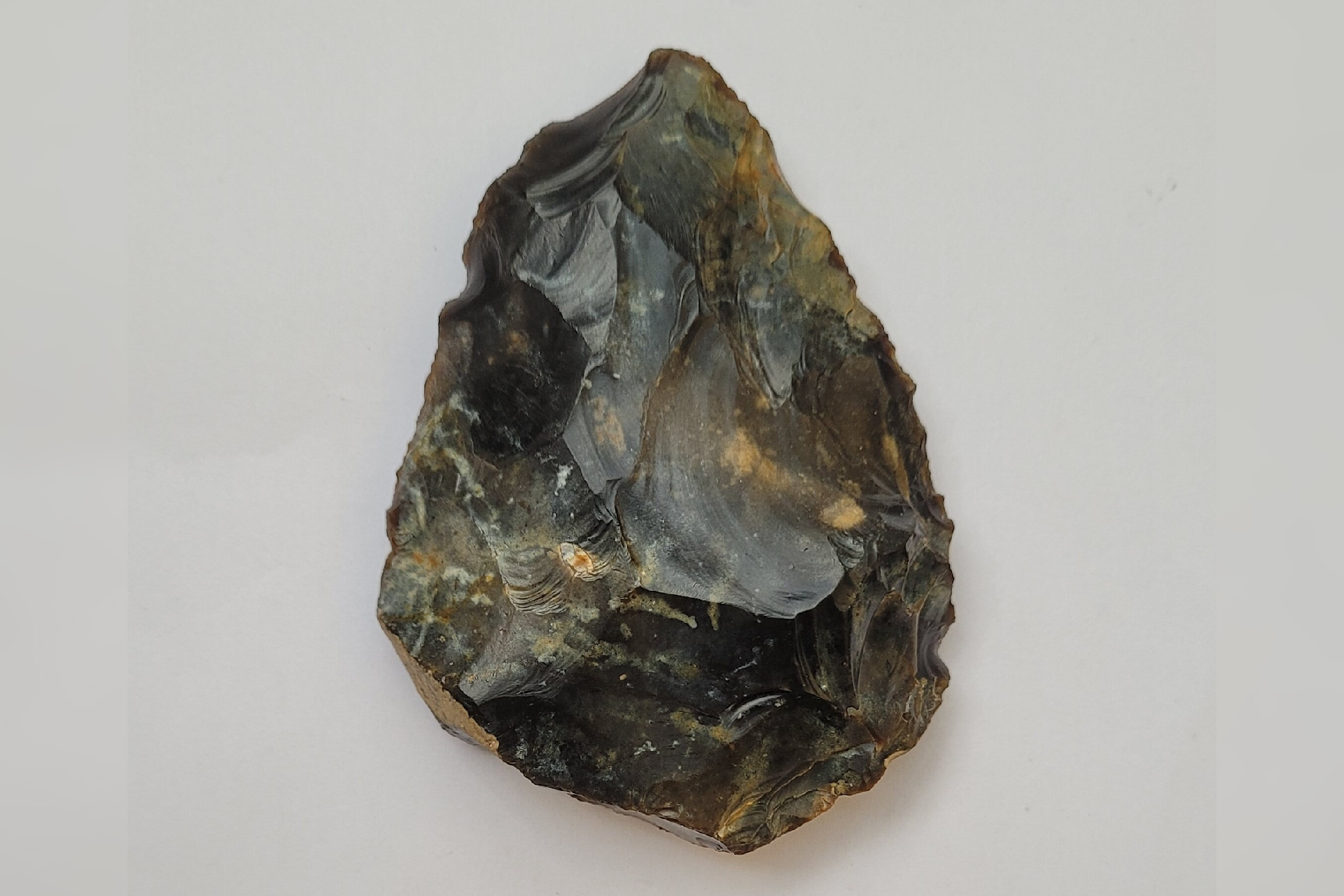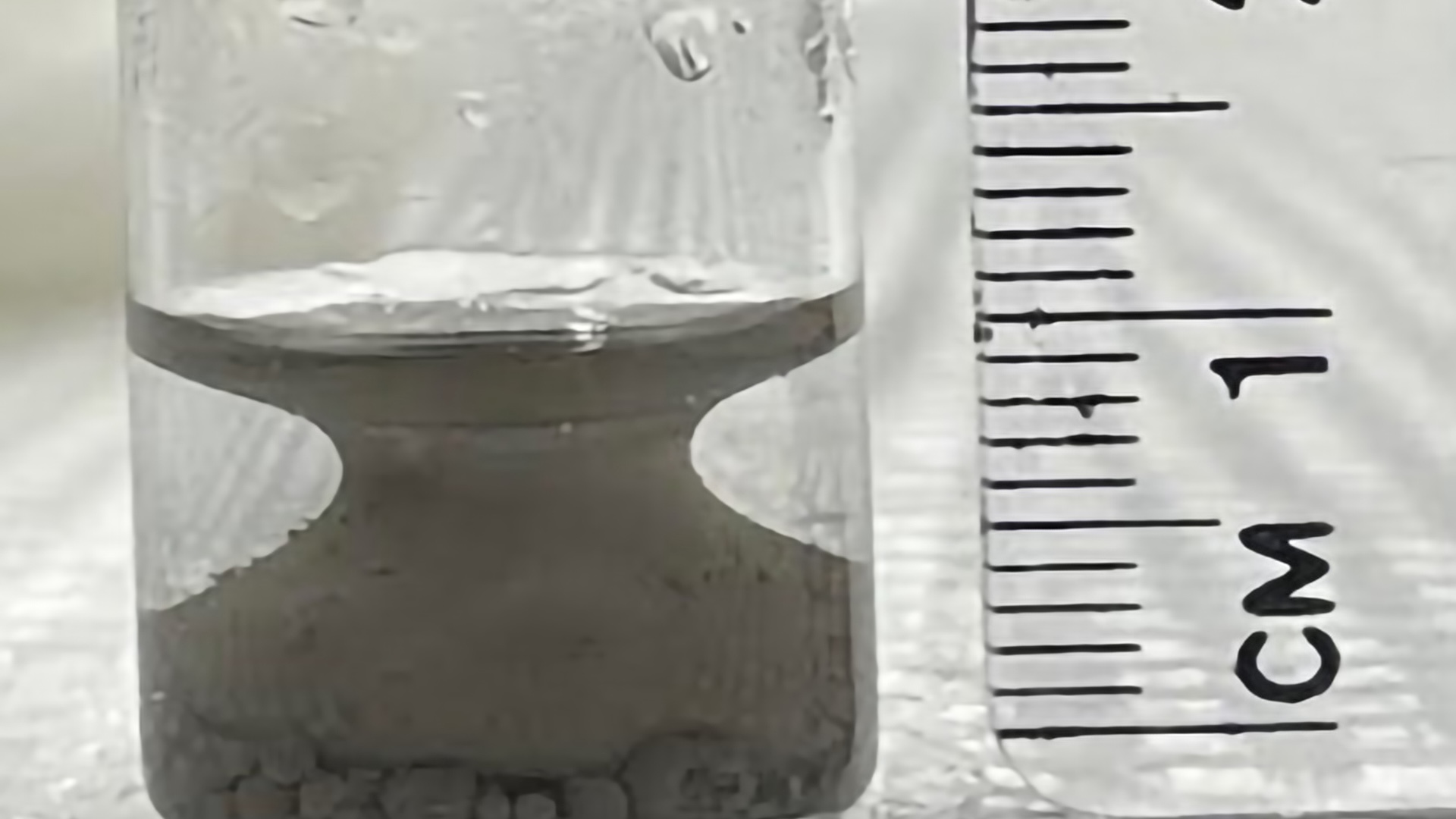Rock found by a 6-year-old on a beach is actually a 50,000-year-old Neanderthal ax
The 6-year-old boy found the rock and then didn't tell anyone for three years. But a new examination reveals it was made by some of the last Neanderthals.

Three years ago, a then-6-year-old boy named Ben discovered a strange rock on a beach in Sussex, England. He took it home, but then lost track of it. Now, the object has been identified for what it really is: a 50,000-year-old Neanderthal hand ax.
When James Sainsbury, curator of archaeology and social history at Worthing Theatres and Museum, received an email from Ben's mother about her son's find, he didn't expect the object to be anything special, Sainsbury told Live Science.
"I get emails like this all the time, especially about beach finds, and they're usually just pebbles that look funny," he said. "But as soon as I saw the photo, I thought, 'That's an Upper Paleolithic Neanderthal hand ax.' It's an absolutely incredible find."
Neanderthal hand axes are relatively small and dark two-sided flints, which makes them recognizable, according to Sainsbury. They're clearly distinct from the Middle or Lower Paleolithic finds in Sussex. Neanderthals used these tools for activities such as breaking bones to suck out the marrow.
Related: 65,000-year-old hearth in Gibraltar may have been a Neanderthal 'glue factory,' study finds
Sainsbury specifically identified the artifact as a Mousterian hand ax, meaning "it's from that very late Neanderthal period when their days were really numbered in Europe and Britain." He added that some scholars even suggest that Mousterian hand axes were made by the last Neanderthal generations in that area.
"As far as Sussex is concerned, it's really quite rare," Sainsbury said. "In our museum, we have one example and one only. They're extremely rare because presumably the Neanderthal population density was very low."
Sign up for the Live Science daily newsletter now
Get the world’s most fascinating discoveries delivered straight to your inbox.

On Nov. 24, Ben and his family brought the artifact to the Worthing Museum, where Sainsbury confirmed that it was, in fact, a Neanderthal ax. Because of how "fresh" and undamaged it looks, he suspects the artifact had been buried safely underwater for most of its history.
"It's very unlikely it would have made it onto shore, at that height on the beach, without it being damaged," he explained. "So I think it was brought in with tons of shingles to increase the beach defenses either from the English Channel, where it would have been dredged from an old riverbed that's now submerged, or from the North Sea, in the area of Doggerland."

Doggerland is a now-submerged region beneath the North Sea that was inhabited by prehistoric people before the land was flooded by rising sea levels about 8,000 years ago. Sainsbury and his co-workers are still investigating when the last batch of pebbles was deposited on Shoreham beach.
"Ben is 9 now and really knew his stuff — his Bronze Age from his Iron Age from his Romans," Sainsbury said. "He clearly has a real interest in archaeology."
Ben loaned the hand ax to Worthing Theatres and Museum, and Sainsbury had it on display just an hour after meeting with Ben's family. It will remain there until February, and the curator was happy to report that it has already been attracting more visitors than usual.

Margherita is a trilingual freelance writer specializing in science and history writing with a particular interest in archaeology, palaeontology, astronomy and human behavior. She earned her BA from Boston College in English literature, ancient history and French, and her journalism MA from L'École Du Journalisme de Nice in International New Media Journalism. In addition to Live Science, her bylines include Smithsonian Magazine, Discovery Magazine, BBC Travel, Atlas Obscura and more.









